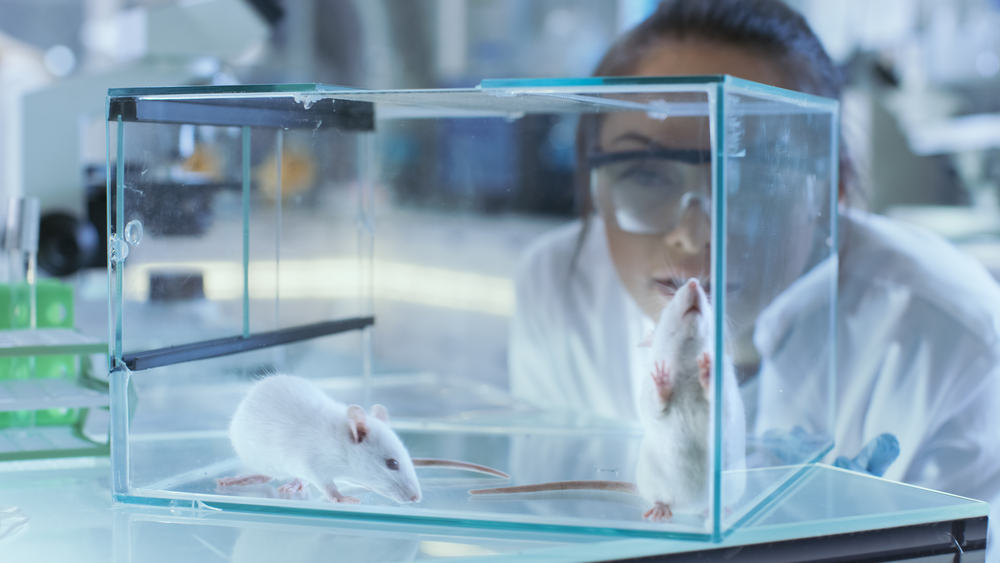Scientists Unraveling How Movement is Translated Into Desired Action

The findings of a Harvard University study are furthering understanding of the mechanisms involved in movement disorders and may open new therapeutic opportunities to treat Parkinson’s disease.
The mouse study, “The Striatum Organizes 3D Behavior via Moment-to-Moment Action Selection,” was published in the journal Cell.
The brain relies on the balanced activity of two nerve cell populations located in a specific region of the brain — the striatum — to achieve accurate control of body movement. The striatum functions as the coordinating center for motor and action planning. In Parkinson’s disease, striatum nerve cells are those most affected, which partly explains the motor symptoms that characterize the disease.
A previous study identified two groups of nerve cells in the striatum that have opposing activities to control key aspects of movement; those are called direct pathway and indirect pathway neurons.
While direct pathway cells select actions and can trigger movement, the activation of indirect pathway cells works as a stop signal, inhibiting unwanted behaviors. However, some studies suggest both pathways are activated at the same time.
“That didn’t make sense based on what we’ve long thought each pathway did,” the study’s lead author Jeffrey Markowitz, said in a press release.
To evaluate the dynamic activity of both cell populations, Harvard Medical School researchers used a technology called MoSeq (short for motion sequencing) developed by study’s senior author Sandeep Robert Datta. This technology films three-dimensional movements of the mice and uses machine learning to analyze the movements into basic patterns lasting only a few hundred milliseconds apiece. The researchers named those ultra-fast movements “syllables.”
Mice were genetically engineered to display different glowing colors in direct and indirect pathway neurons upon activation, allowing researchers to accurately analyze the simultaneous activity of both cell populations as mice performed several actions.
When mice changed their behavior — from running to stopping, for example — the activity of both pathways increased, which is in agreement with data from previous studies. But when they looked at the syllables identified by the MoSeq system, they found the pattern of activity of both pathways was not the same.
Instead, direct or indirect pathway cells dominated some particular syllables. The association between the type of cell that was activated and syllables was so pronounced that the team could effectively identify syllables based on the pathway activity alone.
To further characterize the role of these cells, the team induced brain injuries in the mice, targeting only the striatum. After a week of recovery, they re-analyzed animals’ behavior and compared them with that of healthy animals.
Mice with brain lesions in this specific area also were able to perform normal syllables, such as sniffing, running, rearing, and turning. However, their brains were unable to sequence these movements correctly.
“… behavioral syllables are associated with characteristic and pathway-specific neural dynamics. These dynamics represent key 2D and 3D movement parameters … the striatum plays a key role in choosing which … behavioral syllable to express at any given moment,” researchers wrote.
“This underscores the importance of order in piecing movements together toward a desired outcome,” Datta said. “Even if you’re able to move your body correctly, if you can’t put actions in the correct order, it’s hard to do even the most basic of things.”
The researchers believe that with additional studies and improved technology it will be possible not only to replicate these results, but expand this reported relationship between syllables and neural activity to other parts of the brain that control movement.
In addition, these findings may help promote the development of new treatments for Parkinson’s disease and other neurodegenerative disorders in which basic movements become extremely difficult as disease progresses.
“We hope that future work emanating from these findings would address more specifically what exactly happens in these cell types when neurodegenerative disorders rob people’s brains of their ability to generate actions and action sequences.” Datta said. “We believe our observations set the stage for both unraveling how movement gets translated into desired action, and propel us forward in our ability to understand and, eventually, treat devastating neurodegenerative disorders where this process goes awry,” he added.






